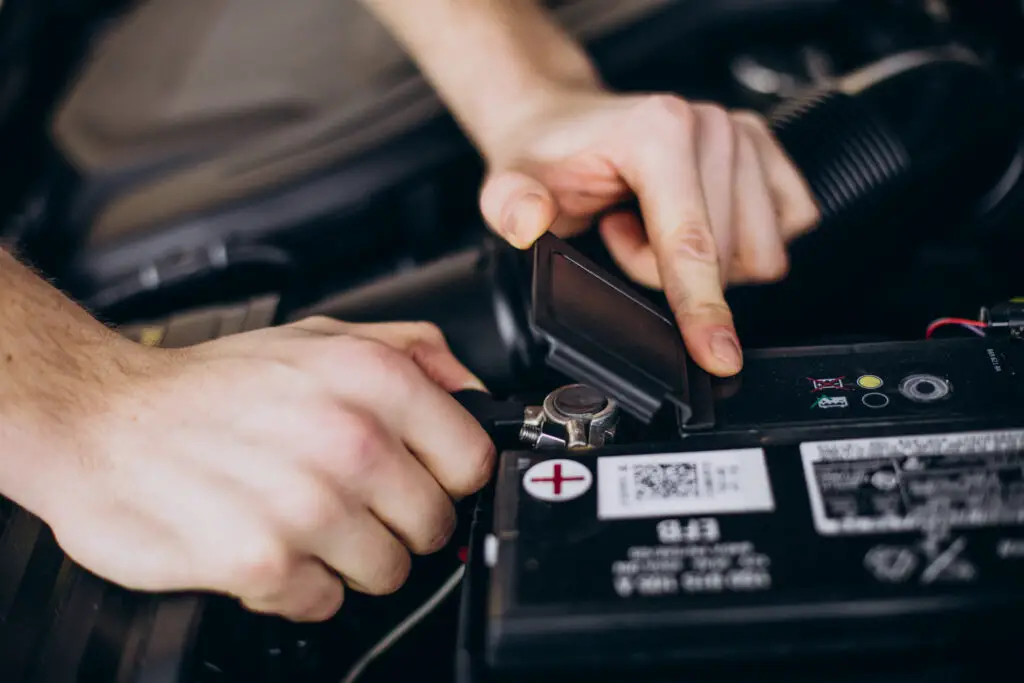Wondering if a car battery can be too dead to jump start? Picture this: you turn the key in your car’s ignition, and nothing happens. Not even a click. At this point, you might wonder if your battery is beyond saving. Is it possible for a car battery to be too dead to jumpstart? Let’s dive into the mechanics of car batteries and the factors that determine whether a jumpstart can bring them back to life.
Understanding a Car Battery
Car batteries are rechargeable, typically lead-acid batteries, designed to provide the necessary power to start your vehicle and run its electrical components. Understanding how they work and why they fail can help you make informed decisions when issues arise. Over time, they can lose charge due to factors like:
- Age: Batteries typically last 3-5 years.
- Extreme Temperatures: Hot or cold weather can drain a battery faster.
- Parasitic Drains: Leaving lights or electronics on can deplete the charge.
- Faulty Alternator: A failing alternator may not recharge the battery while driving.
Can a Battery Be Too Dead?
It’s important to understand the conditions under which a battery might be too dead to jumpstart. In most cases, even a completely dead battery can be jumpstarted. However, there are exceptions:
- Battery Sulfation: Over time, lead sulfate crystals can form on the battery plates, reducing its ability to hold a charge. If the sulfation is severe, the battery may be irreparable.
- Physical Damage: Cracked casing, leaking acid, or broken terminals render the battery unsafe and unusable.
- Internal Short Circuit: If the battery’s internal structure is compromised, a jumpstart won’t help.
- Excessive Discharge: If the voltage drops below 10.5 volts for an extended period, the battery might not accept a charge.
Signs a Battery May Be Beyond Saving
Recognizing the signs of a battery that might be beyond saving can save you time and effort. Here are some clues that your battery might be too far gone:
- No Response: No lights, sound, or dashboard activity when turning the key.
- Swollen Case: A bulging battery case indicates internal damage.
- Corroded Terminals: Excessive corrosion may prevent a proper connection.
- Frequent Jumpstarts: Needing multiple jumpstarts in a short time is a red flag.

How to Attempt a Jumpstart
If you’re unsure whether your battery is salvageable, it’s worth attempting a jumpstart. Follow these steps to try a jumpstart:
- Inspect the Battery: Check for visible damage or leaks. If found, do not proceed.
- Connect Jumper Cables: Attach the jumper cables in the correct order:
- Red cable to the positive terminal on the dead battery.
- Red cable to the positive terminal on the good battery.
- Black cable to the negative terminal on the good battery.
- Black cable to an unpainted metal surface on the dead car.
- Start the Good Car: Let it run for a few minutes.
- Attempt to Start the Dead Car: If it doesn’t start, wait a few more minutes and try again.
What to Do If Jumpstarting Fails
When a jumpstart fails, it’s crucial to assess the situation and explore alternatives. If your car still won’t start after a jump, consider these options:
- Battery Replacement: If the battery is old or damaged, it’s time for a new one.
- Alternator Check: A failing alternator may not recharge the battery properly.
- Professional Help: Seek assistance from a mechanic or roadside service.
Preventing a Dead Battery
Proper maintenance and proactive measures can significantly reduce the chances of a dead battery. To avoid future issues, follow these maintenance tips:
- Regular Testing: Check your battery’s voltage periodically.
- Clean Terminals: Remove corrosion to ensure a good connection.
- Turn Off Electronics: Make sure lights and devices are off when the car is not running.
- Drive Regularly: Short trips may not provide enough time to recharge the battery fully.
Final Thoughts
While a car battery can’t always be jumpstarted, understanding the reasons behind its failure can guide your next steps. In most cases, a jumpstart will do the trick, but when it doesn’t, it’s time to assess the battery’s health and consider a replacement. Have a battery-related experience or tip? Share it in the comments below!
Discover more from Chikwem
Subscribe to get the latest posts sent to your email.